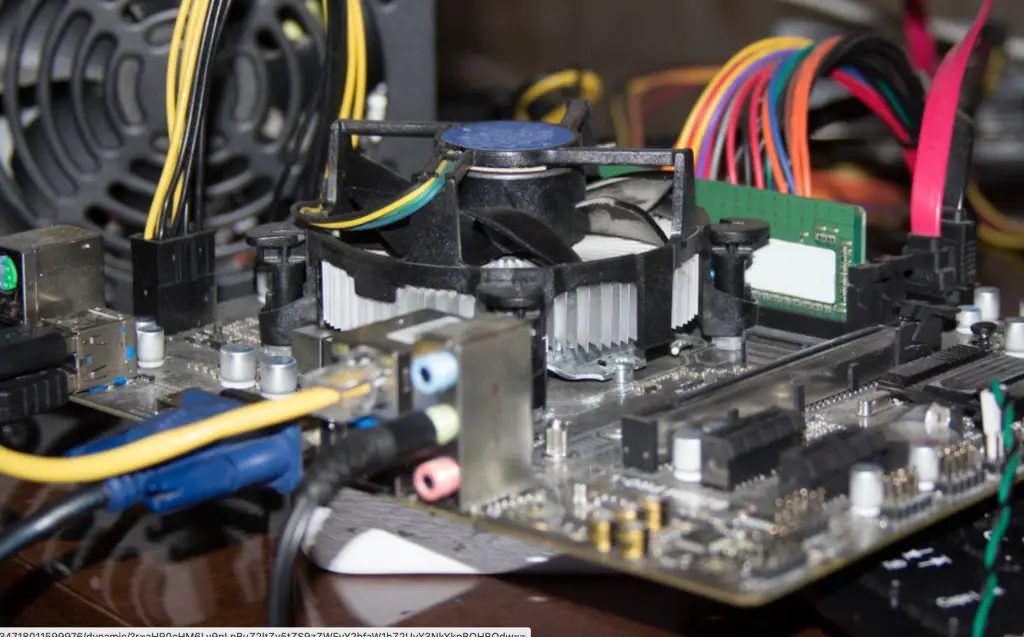I am assuming that you’ve got all the parts for your new computer build, but there’s one problem – you can’t find a case that you like or that fits your budget. Alternatively, perhaps you are just curious as to whether a motherboard can be used without a case, and would like to find out if it works.
So, can you run a motherboard without a case? Actually, components such as the CPU and GPU are extremely sensitive to dust, so if you want your motherboard to last, it’s important to use an enclosure to protect it from particles floating around in the air.
Find out in this article whether it’s feasible to do so and what the pros and cons are!
Can I Run My Motherboard Without a Case?
If you’re asking whether you can run your motherboard without a case, the answer is technical yes, but it’s not recommended. A motherboard is designed to be used inside a case, and running it without a case can cause all sorts of problems.
For one thing, your motherboard will be more susceptible to dust and other environmental contaminants. This can lead to overheating and other issues. Additionally, without a case, your motherboard will be less protected from physical damage.
So while you can technically run a motherboard without a case, it’s not something we would recommend. If you’re looking to save money on a new computer build, look for other ways to cut costs instead of skimping on the case.
What Are the Benefits of Running My Motherboard Without a Case?

There are several benefits to running a motherboard without a case.
First, it can save money. If you don’t need all the features that a case provides, then you don’t need to spend the extra money on one.
Second, it can improve airflow and cooling. Without a case, your components will be more exposed to air, which can help keep them cooler.
Finally, it can make your build process easier. Without a case, you won’t need to worry about things like cable management or installing fans.
How Do I Set Up My Motherboard If I Don’t Have a Case?
There is no need to worry if you do not have a case for your motherboard! It is still possible for you to set it up and get it running. The only thing you need is a few minutes and a few tools to get the job done.
First, gather everything you’ll need: your motherboard, CPU, RAM, power supply, and any other components you plan on using. It is also important to ensure that you have all the necessary cables and connectors.
Next, find a flat surface to work on. A table or desk is ideal. Place your motherboard on the surface, making sure that all the ports and connectors are accessible.
Now it’s time to start connecting everything together. Begin with the CPU: insert it into the socket on the motherboard and then secure it with the appropriate latch or clip. Next, add your RAM modules into their slots. After that, connect your power supply to the motherboard.
Last but not least, make sure that all of the components you are going to use are connected, including any graphics card or sound card. Having connected all the different parts of the system, you are now ready to boot the system up and begin using it.
My Experience with Motherboard Without a Case
I am not sure if this is a good idea or not. My motherboard was working for about three years without any problems and then it stopped booting. I had to take it to the computer repair shop and they told me that there was water damage because the board got wet from when I spilled soda on my desk.
So, if you are going to use your own case, make sure to put some kind of padding around the motherboard so that it doesn’t get wet! And keep in mind, if you have an accidental spill (or other accident) with something besides water, the board can still be damaged.
You should always be careful with electronics – but especially ones like motherboards!
Is It OK to Touch an Exposed Motherboard?
Technically, you can touch and use your computer’s motherboard without a case, but it’s not recommended. Since motherboards come in contact with environmental elements, it’s best to keep them covered with a case that protects against liquids, dirt and other outside contaminants.
If possible, you should also wipe off any spilled liquids as soon as they occur to prevent damage. Another good rule of thumb is to avoid touching any sensitive components (including capacitors) on your motherboard with your hands when dealing with internal repairs or upgrades.
Using tools like antistatic gloves will help avoid unintended physical damage while still allowing you access to critical components. When installing or upgrading parts on your motherboard without a case, always make sure all electrical equipment has been unplugged first.
Is an Open PC Better for Cooling Motherboard?
An open PC can be better for cooling, but not necessarily. The main advantage to running an open case is that you can quickly and easily get access to your hardware. That allows you to swap parts in and out, upgrade components as you see fit, and add extra ventilation as needed.
The downside is that it’s easier for dust, humidity and other debris to enter into your PC’s internals, where it might clog up fans or other heat-related components; think of how a dusty car engine can overheat from all that crud sitting on top of its pistons.
Some Tips and Tricks While Using Motherboard Without a Case
Following these tips will help you maintain your motherboard in good condition while using without Case:
1) If you don’t have a case for your motherboard then make sure that you cover it up with something like cardboard or any other material which can protect it from getting any damage or scratch on its surface.
It’s better if you wrap it with something soft like cotton cloth so that there won’t be any scratches on the plastic surface of your motherboard. This tip is also applicable for those who have cases for their motherboards but want to keep them clean by not putting them inside cases every time when they use them.
2) Make sure that you don’t put heavy objects on top of your motherboard because it might get damaged due to pressure applied by heavy objects.
3) Don’t move your computer around too much because chances are high that some wires might get disconnected from their ports.
4) Always disconnect the power supply before moving your computer so that you can avoid any kind of electric shock while moving it around.
5) Always remember to check all parts of your computer including the motherboard before turning it on because sometimes small parts such as screws might fall out during shipping or handling of components.
6) Keep away all kinds of liquids including water and soda cans/bottles near your computer at all times because they contain liquid which might cause corrosion in electronic components such as circuit boards and hard disks etc.
7) Try to avoid direct sunlight and heat sources because both of these things are harmful for computer components.
8) Try not to touch any part of your computer or motherboard with bare hands, always wear gloves or use some tissue papers whenever you need to touch them.
9) Always try to handle electronics in a static free environment so that you can prevent damage caused by static electricity build up.
10) Never ever try to repair your motherboard yourself unless you know exactly what you’re doing otherwise it might end up damaging your motherboard permanently.







